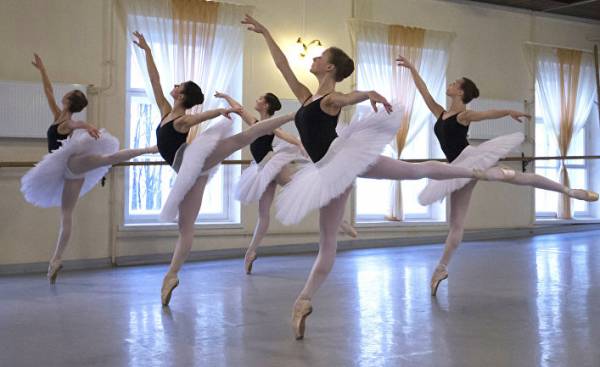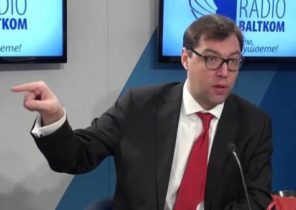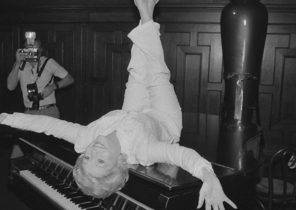
“Sleeping beauty”, “don Quixote”, “Bayadere”, “Nutcracker”. “Swan lake”, “Romeo and Juliet”, “Raymonda”. From year to year, from month to month, from day to day.
So arranged the ballet repertoire of Ukrainian theatres and for our audience it is not unusual.
But if you move a similar system in cinemas, few people want years to watch a limited set of the classic, albeit the choicest of films. Even if every day on the screen is a different picture from the list.
The viewer no reason to rush to the premiere — after all, they still can be viewed as many later, as part of the core repertoire.
The art form in his eyes will cease to be alive and diverse.
PKG. Culture is understood as form their repertoires of leading ballet troupes of the world and how this is happening in Ukraine.
Of course, to put the play on stage — the process is much more laborious than to move the video on the projector. But that is why the Ukrainian theater has something to borrow from film distributors. And even better — from their foreign colleagues who may not always have such a long history, but that they feel it is the time in which there are
One of the clearest examples of a modern ballet company, America’s oldest troupe of the San Francisco Ballet, which shares the theater season programs plus new year’s block of “the Nutcracker”.
It begins with the season already in December with Christmas performances (on such terms as the troupe shares the stage with San Francisco Opera) and ends in the first half of may, but during this time manages to present 8 different programs that last from weeks to months. One program may include either one play in 3 acts (e.g., “Swan lake”, “Cinderella”, “the Jewels”), or a series of one-act ballets, often by contemporary choreographers.
San Francisco Ballet promotes the idea of “ballet for all”, so the program is designed so that each spectator could for the evening, and during the season to get the most varied experience with the ballet and to choose for himself the most interesting direction.
In the formation of the programs involved and artistic leadership, and sponsors of the company, and critics with the audience. According to Ruben Martin, the former Prime Minister from the San Francisco Ballet, the season formed a few years before the start of the theater’s management negotiates for future productions with donors (“donors”) to adopt the budget. If the show or program is sold out, it can extend. But if the criticism and feedback from the audience are not satisfactory, the new ballets will be removed from the repertoire at the expiration of the contract with the choreographer.
In a similar way works and the Royal ballet of great Britain, with the difference that the responsibility for the repertoire lies with the Director of the company. The program for the season is formed from the rich heritage of the first artistic Director of the troupe, Frederick Ashton and his successor Kenneth MacMillan, as well as modern works of existing staff and guest choreographers.
The ratio of classic and modern productions in the repertoire of the Royal ballet — 50/50. According to the press service, the new choreography of mission-critical companies to evolve and participate in the development of ballet.
But it is impossible to do without the popular classical ballets like “the Nutcracker” and “Sleeping beauty”. First, the viewer needs to be variety in choice, and second, the famous historical performances are used for the company’s airbag. They bring the maximum income and “feed” new choreographic experiments.
During the season the Royal ballet presents 10-12 performances, which follow each other in blocks from 1 to 3 weeks. The repertoire is starting to plan for 3 years to coordinate schedules of residents and invited team members. And 6 months before the start of the season his program appears in the open access and tickets go on sale.
This schedule can be doubly beneficial for the viewer because then it is more likely to see a really quality product. “The bloc system allows the dancers for 4-5 hours daily for several weeks to rehearse for one performance, clean it, bring to a high level. And when you have a day new play, it is very difficult to perfect the role,” says Katerina Hanakova, soloist of the English national ballet, until moving to London 5 years at the National Opera of Ukraine.
Moreover, this system allows the technical team to rebuild the entire scene every night, changing the scenery for the next performance, and allows the artists to experiment with scenography.
Performances at the National Opera of Ukraine really go through the day — each time different show. In a press-service of the theater explain that such a system was in it from the ground, it is also adopted in other repertory theaters in the country.
The principle of operation is based on a permanent repertoire, when performances are changed one after another, was prevalent even in the Imperial theaters of the Russian Empire, and this approach is still used in Eastern Europe.
However, today repertory theatres adopt more and more features in a flexible system stagione (ital. “season”) when the program is built on season — guest stars, festivals and alternative venues, make the repertoire of fluid and experimental, and the bloc system performances and pre-planned poster allow you to sell tickets.
The same Mariinsky theatre today presents classic and modern drama in 2 scenes, and last year opened a new stage area — Seaside stage of the Mariinsky theatre in Vladivostok. The sale of tickets to the season open in advance, which is convenient for tourists.
While the Mariinsky theatre remains a classical repertory theatre with state support. The lack of clear blocks in the schedule looks logical from the point of view of tradition: a rich classical repertoire and reputation all ballet allows you to produce 4 premieres in the season (new productions or resumption of old).
The lack of numerous innovations kompensiruet touring other theatres, international festivals, which are attended by the soloists of the leading theaters of ballet from all over the world, educational programs for children and adults.
Besides, the Mariinsky does not ignore modern dance. “There is always interest in the works of contemporary choreographers (the Russian and the world). Without the creation of new ballets is impossible to talk about development of ballet art in General, and the ballet company”, — says Yuri Fateyev, acting Director of the ballet company of the Mariinsky theatre in an interview with “Dance Magazine”.
The national Opera of Ukraine produces an average of 2 productions per year and is almost entirely based on the classical repertoire. Even new plays put him in imitation and modern dance and is ignored. “We must not follow the path of experimentation. Our theatre focuses on the local population, and the people here love the classics, they want stories” — explain in a press-service of the theatre.
Desire tales and illogical excuses for a summer repertoire of “the Nutcracker” and “the Snow Queen”, which, as we are assured at the National Opera, invariably are celebrated at any time of the year.
However, information about the notorious sell-out denies the latest report of the accounting chamber of Ukraine for the year 2016, according to which the average occupancy of halls is barely 50%. New productions have Acoperi banal no money: 99.6% of all public investment in the national theatres spent on staff salaries.
According to 2015, in the state of National Opera was 1126 people, including 501 — artists. That is, the number of administrative and technical staff exceeds the artistic composition. Labor excessively bulky, even in the framework of the law, collective theatre and allocates its own funds. A modest balance is new production, an even smaller (3% of all national theatres) — the maintenance of material-technical base, which includes maintenance of the building and scenery for the performances.
To increase the income of the theatre does not intend to: selling tickets for the performances — in fact, the only official source of profit. Touring remains without attention of the Ministry of culture: according to the audit, foreign tours for 2014 and 2015, brought Nazaire funny revenue in the amount of UAH 9301 for each performance. The Odessa Opera, for example, and not provided documents about the trips.
Overall, the Ministry of culture is not interested in the development of theatrical environment. The official purpose of financial support of theatres — providing aesthetic needs of the population. However, the proposed aesthetics has disputable value and is obsolete both morally and physically. At a time when the national Opera houses focus on the clumsy and repetitive, like a broken record, a repertory format, their Western counterparts have not driven themselves into the framework and act strategically.
Such legends, as the Paris Opera and La Scala, cook for 1-3 performances a month, the Vienna Opera house also puts no less than 3 performances. New York City Ballet program changes every 3-5 days, but in time for the season to show about 50 different productions with dozens of the Prime Minister, even some of them — a short contemporary works, combined with each other in one evening. American Ballet Theatre, by contrast, is more focused on the classics, and in the course of the year touring the world’s largest theatres with 1 program for a month.
Foreign ballet companies are motivated to earn an income, because financial support comes only at the expense of sponsors and grant system. Government grants is a minimum budget, which can rely theatres. Moreover, they are directly linked with their performance in the same Russia the amount of funding depends on the performance of sales of tickets to performances.
In Ukraine, the whole strategy of the development of theaters is limited only by the number of performances during the season and expected revenue for the tickets.
According to accounting chamber, the Ministry of culture formally refers to the development of the theatrical sphere and can afford not to report to the Ministry of economic development on the implementation of the Strategic plan activities.
In short, the state theatre is much more focused on instant private profit, than place in contemporary ballet context. Know your audience and, it seems, I see no reason specifically to attract new audiences. The role of bait for the young and for tourists executes the affordable price of the tickets, but judging by the hype on expensive independent touring ballet troupes and soloists, it’s not about the money. The audience is ready for a new quality and new meanings. Another question is whether national product ever on this demand to answer.







